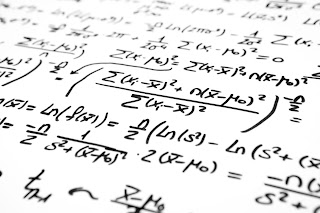Inventory / Reorder Level Formula
- Reorder level = Maximum usage * Maximum lead time (Or) Minimum level + (Average usage * Average Lead time)
- Minimum level = Reorder level - (Average usage * Average lead time)
- Maximum level = Reorder level + Reorder quantity - (Minimum usage * Minimum lead time)
- Average level = Minimum level + Maximum level (or)2 Minimum level + ½ Reorder quantity
- Danger level (or) safety stock level = Minimum usage * Minimum lead time (prefer) (or) Average usage * Average lead time (or) Average usage * Lead time for emergency purposes
- EOQ (Economic Order Quantity - Wilson's Formula) = v2AO/C
Where A = Annual usage units
O = Ordering cost per unit
C = Annual carrying cost of one unit
i.e. Carrying cast % * Carrying cost of unit
- Associated cost = Buying cost pa + Carrying cost pa
- Under EOQ Buying cost = Carrying cost
- Carrying Cost = Average inventory * Carrying cost per unit pa * Carrying cost % (Or) Average Inventory * Carrying cost per order
- Average inventory = EOQ/2.
- Buying cost = Number of Orders * ordering cost.
- Number of Orders = Annual Demand / EOQ.
- Inventory Turnover (T.O) Ratio = Material consume.
Average Inventory - Inventory T.O Period = 365 . Inventory Turnover Ratio
- safety stock = Annual Demand *(Maximum lead time - Average lead time)365
- Total Inventory cost = Ordering cost + Carrying cost of inventory +Purchase cost
- Input Output Ratio = Quantity of input of material to production
Standard material content of actual output
High and low inventory ratio Formula
- High Inventory T.O Ratio indicates that the material in the question is fast moving
- Low Inventory T.O Ratio indicates over investment and locking up of working Capital in inventories
Pricing of material Issues
- Cost price method
- Specific price method
- First in First Out method (FIFO)
- Last in First Out method (LIFO)
- Base stock method
- Average price method
- Simple average price method = Total unit price Total No. of purchases
- Weight average price method = Total cost Total No. of units
- Periodic simple average price method = Total unit price of certain period
Total Number of purchases of that period (This rate is use for all issues for that period. Period means a month (or) week (or) year) - Periodic weight average price method = Total cost of certain period
Total Number of units of that period - Moving simple average price method =Total of periodic simple average of certain number of periods
Number of periods - Moving weight average price method= Total of periodic weight average of certain number of periods
Number of periods
- Market price method
- Replacement price method = Issues are value as if it was purchase now at current market price
- Realizable price method = Issues are value at price if it is sold now
- Notional price method
- Standard price method = Materials are price at pre determine rate (or) Standard rate
- Inflated price method = The issue price is inflated to cover the losses incur due to natural(or)climatic losses
- Re use price method = When materials are return (or) reject it is valued at different price. There is no final procedure for this method.
ABC Analysis (or) Pareto Analysis :- In this materials are categorized into:
Particulars Quantity Value
"A" - Important material 10% 70%
"B" - Neither important nor unimportant 20% 20%
"C" - UN Important 70% 10%
Special Notes for Material Formula
- Material receive as replacement from supplier is treat as fresh supply
- If any material is return from Department after issue, it has to be first dispose in the next issue of material
- loss in the book balance of stock and actual is to be transferred to Inventory adjustment a/c and from there if the loss is normal it is transferred to Over Head control a/c. If it is abnormal it is transfer to costing profit and loss a/c.
- CIF = Cost Insurance and Freight (This consignment is inclusive of prepaid insurance and freight)
- FOB = Free on Board (Materials moving by sea - insurance premium is not paid)
- F.O.R = Free on Rail (Insurance and freight is not borne by the supplier but paid by the company or purchase)
- For each receipt of goods = Goods Receipt note
- Each issue of goods = Materials Requisition note (or) Material Issue note
Accounting Treatment
- Normal Wastage = It should be distribute over goods output increasing per unit cost
- Abnormal Wastage= It will be charge to costing profit and loss a/c
- Sales value of scrap is credit to costing profit and loss a/c as an abnormal gain.
- Sale proceeds of the scrap can be deduct from material cost or factory overheads.
- Selling proceeds of scrap may be credit to particular job.
- Normal Defectives = cost of rectification of defectives should be charge to specific
- Abnormal Defectives = This should be charge to costing profit and loss a/c
- Cost of Normal spoilage is to borne by good units
- Abnormal spoilage should be charge to costing profit and loss a/c








No comments:
Post a Comment